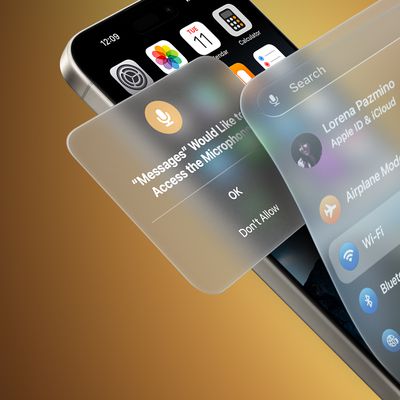In April, Apple debuted the new M1 iMac models with a dedicated Touch ID keyboard, marking the first time that Touch ID was available on a standalone keyboard option. At launch, the Magic Keyboard with Touch ID was only available with the iMac, but last week, Apple made it available to purchase separately from the iMac.
For our latest YouTube video, we picked up one of the new Touch ID keyboard models and tested it out with a couple Macs to see just how it works. There are three variants of the keyboard - a standard version without Touch ID for $99, a standard keyboard with Touch ID for $149, and a Touch ID keyboard that also has a numeric keypad, which is priced at $179. We tested the $179 full-size version with numpad.
Because it's designed to work with the M1 iMac, the Magic Keyboard with Touch ID is also compatible with other M1 Macs, including the MacBook Air, MacBook Pro, and Mac mini. On all of these machines, the Touch ID feature is functional.
Design wise, the Magic Keyboard with Touch ID is similar to prior versions of the Magic Keyboard, but next to the F12 key at the top of the accessory, there's a dedicated Touch ID button with a little fingerprint sensor.
This Touch ID button works the same as the Touch ID button built into MacBook Air and MacBook Pro models, authenticating purchases and replacing a password with biometric authentication. It also serves as a sleep/wake button.
As mentioned before, the Magic Keyboard with Touch ID only works with M1 Macs. If you want to use the Touch ID function, it needs to be paired up with one of Apple's latest Macs.
You can use the keyboard with an Intel Mac, but Touch ID is non-functional so it's not worth the cost over a standard keyboard. It's also worth noting that some of the function keys on the new keyboard also don't appear to work well with an Intel Mac. You can remap some of them with Shortcuts, but it's not worth the effort since there's still an option to get a non-Touch ID version of the Magic Keyboard.
With an M1 Mac, the Magic Keyboard with Touch ID works perfectly, and the function keys are operational offering up controls for adjusting brightness, accessing Do Not Disturb, searching, and controlling media playback.
The M1 MacBook Air and M1 MacBook Pro already have built-in Touch ID buttons, but the keyboard may be useful if you plan to use one of these machines in clamshell mode with an attached display. It's most useful for the M1 Mac mini, which does not have a Touch ID button because it does not ship with peripherals.
The Magic Keyboard with Touch ID that comes with the M1 iMac is available in multiple colors, but the standalone versions that Apple offers are limited to silver.
Have you picked up one of the new Touch ID keyboards to use with an M1 Mac? Let us know what you think in the comments.





















